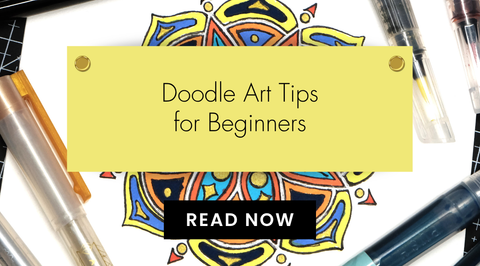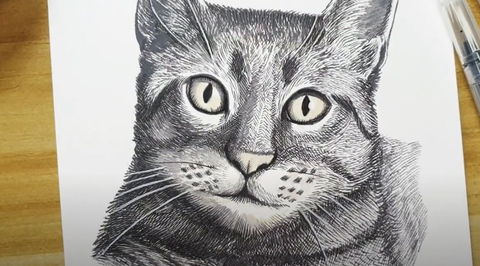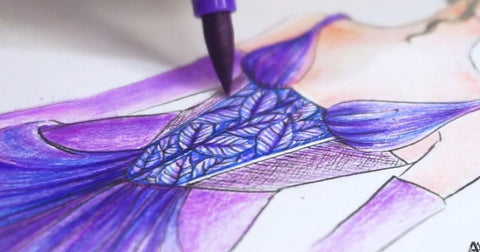7 Art Myths That Need to Be Shattered
Last Updated: August 1, 2024
In a world where creativity often takes a backseat to practicality, the belief that "art isn't for everyone" has perpetuated a series of myths that stifle expression and appreciation. From the misconception that only the "talented" can create meaningful work to the idea that art is merely a luxury reserved for the elite, these myths have long overshadowed the true essence of creativity.

In this blog post, we will shatter seven pervasive myths about art, revealing how it is not only accessible to all but also a vital part of our society. Whether you're an aspiring artist or simply curious about the role of art in our lives, join us as we debunk these myths and celebrate the transformative power of creativity!

Myth #1: Art is Only for the Talented
One of the most common myths about art is that it is only for those who are naturally talented. This couldn't be further from the truth. While natural talent can certainly be an advantage, anyone can learn and improve their artistic skills through practice and dedication. Art is a form of self-expression, and everyone can express themselves creatively.

Myth #2: You Need Expensive Supplies to Create Art
Another misconception about art is that it requires expensive supplies. While high-quality materials can enhance the artistic process, they are not a prerequisite for creating art. In fact, some of the most impactful works of art have been created using simple and affordable materials. The key is to focus on creativity and imagination rather than the cost of supplies.

Myth #3: Art is Not a Viable Career
Many people believe that pursuing an art career is not financially viable. However, the reality is that art plays a significant role in our society and economy. From graphic design to advertising to fine arts, there are numerous career opportunities for those with artistic talents. Artistic skills are highly valued in various industries, and many artists have built successful and fulfilling careers in the arts.

Myth #4: Art is Just a Hobby
Some individuals view art as nothing more than a hobby or pastime. While it can certainly be a recreational activity, art holds much deeper significance. Art has the power to inspire, provoke thought, and evoke emotions. It is a means of communication and storytelling that has been integral to human culture since the beginning of time.

Myth #5: You Need Formal Training to Be an Artist
There is a common belief that you must have formal training or education in art to be considered an artist. While formal training can certainly provide valuable skills and knowledge, it is not a requirement for being an artist. Many successful artists are self-taught or have pursued alternative paths to develop their artistic abilities. Some examples are Henri Rousseau, Vincent van Gogh, Frida Kahlo, Bill Traylor, and Henry Darger. What truly matters is passion, dedication, and a willingness to learn and grow as an artist.

Myth #6: Art is Elitist and Exclusive
Another misconception about art is that it is elitist and exclusive, catering only to a select few. In reality, art is inclusive and accessible to all. Whether through museums, galleries, public installations, or community events, art is meant to be experienced and enjoyed by people from all walks of life. Art has the power to bridge cultural divides and bring people together through shared experiences and perspectives.

Myth #7: Art Has No Impact on Society
Some people believe that art has no real impact on society and is merely decorative or superficial. However, art plays a crucial role in shaping our culture, challenging norms, and sparking important conversations. It has the power to address social issues, advocate for change, and reflect the diversity of human experiences. Art can inspire empathy, foster creativity, and contribute to the overall well-being of society.


Breaking Art Stereotypes and Embracing Creativity
It's time to debunk these art myths and recognize that art is for everyone. Regardless of background, skill level, or resources, everyone can engage with and create art. By breaking down these misconceptions, we can foster a more inclusive and diverse artistic community.
Importance of Art in Society
Art is not just a form of entertainment or decoration; it is an essential aspect of our society. It enriches our lives, challenges our perspectives, and provides a platform for expression and dialogue. From visual arts to performing arts to literary arts, creativity is a fundamental part of what makes us human.

Art IS for Everyone: Start Your Art Journey Today!
It's crucial to recognize that art is for everyone and to challenge the stereotypes and barriers that may prevent individuals from engaging with their creative abilities. By embracing the importance of art in society and celebrating the diverse voices within the artistic community, we can create a more inclusive and vibrant cultural landscape for generations to come.

Art myths debunked, common misconceptions about art, breaking art stereotypes, importance of art in society - these are not just topics for discussion; they are calls to action for us to embrace creativity and celebrate the power of art in all its forms. Let's shatter these myths and pave the way for a more inclusive and vibrant artistic world. Drop by The Creative Corner for more inspiring art tips and ideas! See you there!








